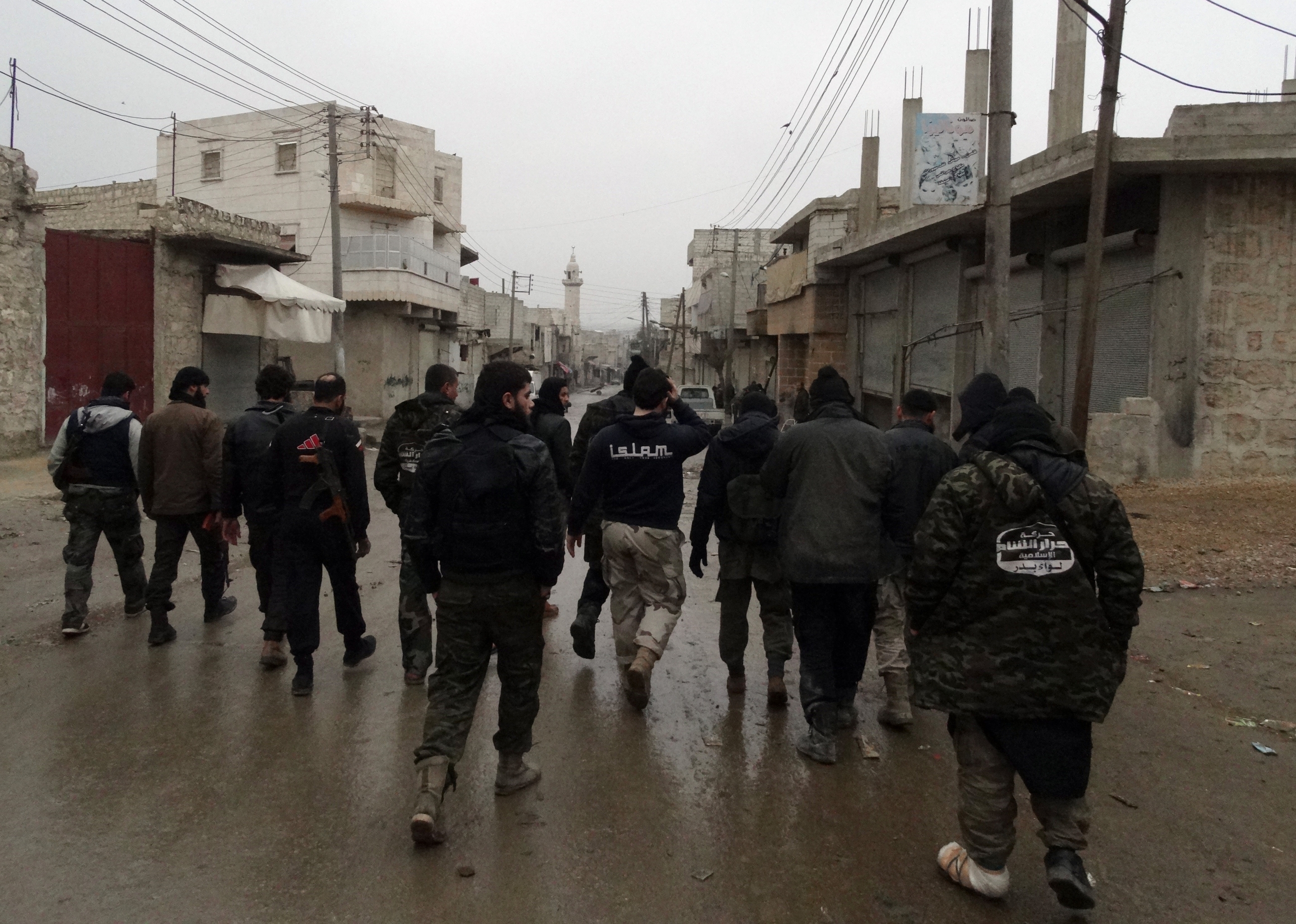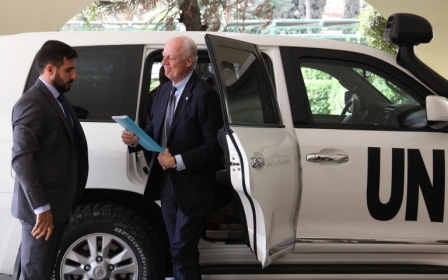BOOK REVIEW: The Syrian Jihad by Charles Lister

The last year has seen a flurry of new books devoted to ISIS of varying quality. The sheer number indicates the extraordinary appetite to better understand this jihadist monster, yet all indicate only an evolving understanding of the developing entity and movement.
Is Lister’s book just another to add to the pile? It focuses on the Syrian jihad and, unlike most of the other books, it assesses and outlines the growth and actions of all the jihadist and Islamist groups in Syria - not just ISIS.
The 20 or so non-ISIS jihadist groups are hugely significant too, not least Jabhat al-Nusra, which may well prove to be a much thornier long-term challenge than its more extreme jihadist counterpart. Lister draws on his experience of face-to-face meetings with representatives of more than 100 Syrian armed groups and a two-year-long dialogue process run by the Brookings Institute where he is based.
Lister estimates the number of jihadists (as opposed to Islamists) in Syria to be in excess of 50,000. So far, more than 25,000 jihadists have journeyed to Syria to fight, far more than the numbers of mujahideen who went to Afghanistan in the 1980s.
The book is an in depth, month-by-month, chronological account of how these groups materialised, evolved, cooperated with each other and even fought each other. Lister outlines the history of Islamist movements in Syria and how ISIS came into being. He pushes the view that the jihadists benefited from the Syrian regime’s actions designed to ensure the opposition was extreme. “Weakening the moderate insurgency and therefore facilitating the rise to prominence of Islamists had been a consistent and key element of the regime’s strategy.”
The bulk of the work deals with the period of the current conflict up to the point where Russia had started its air strikes in Syria in September 2015. Everything that has happened since - with ISIS carrying out multiple attacks in Paris, Sinai and Beirut - only reinforces Lister’s core arguments. He is in no doubt that “Rather than fighting jihadist militancy, Russia’s military intervention is fuelling it like never before.” An assessment of just how much the Russian strikes will impact the jihadist movements may have to wait perhaps for a follow up work.
The most fascinating parts of the work are those that deal with Jabhat al-Nusra and Ahrar al-Sham, militarily the two most powerful non-ISIS Islamist/jihadi forces in Syria. Al-Nusra is an al-Qaeda affiliate, a status Lister points out it is increasingly willing to stress alongside its more forthright transnational ambitions. Ahrar al-Sham is Islamist but has cooperated closely with Jabhat al-Nusra and according to Lister has served effectively as its “enabler” in much of Syria, allowing it to work with other groups.
It is this approach that sets Jabhat al-Nusra apart from ISIS and as Lister highlights, it has a strong pragmatic wing to it. But Ahrar al-Sham is playing a careful balancing act, keeping Jabhat al-Nusra onside in its military struggle both with the Syrian regime and ISIS but at the same time pushing a markedly different political approach. Hence Ahrar’s then leader, Hashem al-Shaikh, stated in an interview in April 2015 that Jabhat al-Nusra and its ties to al-Qaeda was a threat to the Syrian people.
Another area of acute interest is the intra-jihadist rivalry. The al-Qaeda (Jabhat Al Nusra)-ISIS tensions and full split in 2013 is explored in detail. Lister sees no chance for reconciliation, with relations having moved from tense to outright hostile. The two operate very differently. ISIS spurns military cooperation from other Syrian opposition groups, even declaring takfir [apostacy] on all of them, whilst Jabhat al-Nusra worked so hard to form constructive links that even when its affiliation to al-Qaeda was revealed in 2013, not one Syrian armed group denounced it.
External actors correctly receive scant praise - not least US policy. Lister highlights the failures of the US “train and equip mission” and the ridiculous way Syrian recruits had to swear to only fight ISIS and not regime forces. One shuddering example of miscalculation has been the way politicians have hyped the ISIS threat. Lister chides former US Secretary of State for Defence Chuck Hagel, for his comment on ISIS, which he described “as sophisticated and well-funded of any group we have seen…. They are an imminent threat to every interest we have, whether it’s in Iraq or anywhere else.” For Lister, this was a “golden gift to the jihadist organization.”
The Syrian Jihad although clear and understandable, is no easy, relaxing poolside read. For those who want just to gain a basic understanding of the Syrian conflict, look elsewhere.
However, specialists on both Syria and jihadi extremists should pour over it and build on Lister’s extensive research. It is as comprehensive a work as the situation and the actors allow. The scale, dynamism and secrecy of these movements and our understanding of them does not permit it. The book cannot also delve into all the myriad aspects of the Syrian conflicts, so it would be misleading to describe this as a blow-by-blow account of the entire Syrian war as some have. It focuses on the Islamist-jihadi element of it.
Lister has though contributed richly to furthering our knowledge - but as always, many questions remain. What it is, is an in-depth work that becomes as much a resource as a path to understanding by someone who has had direct contact in “Track Two” talks with many of the non-ISIS Jihadists and Islamists. The copious passages and extracts of key speeches from these groups’ leaders and thinkers is an asset in itself.
Lister’s conclusion, not unreasonably, is that jihadi and Islamist groups are not about to disappear - not least because of the total failure of the international community to comprehend the challenge and the relative weakness of groups broadly associated with the “Free Syria Army” that the West has backed.
He argues “it appears all but inevitable that Syria’s Islamists will have to be acknowledged as necessary partners in any future peace and political process.” The issue is how Islamist groups can disentangle themselves from their jihadist allies. The later have shown an alarming ability to survive despite all-out military assaults from major powers, and as Lister proclaims: “We should expect no different from those involved in the Syrian jihad.”
The Syrian Jihad: Al-Qaeda, The Islamic State and the Evolution of an Insurgency by Charles R Lister is published by Hurst & Company, London, 2015 (ISBN: 1849045902)
New MEE newsletter: Jerusalem Dispatch
Sign up to get the latest insights and analysis on Israel-Palestine, alongside Turkey Unpacked and other MEE newsletters
Middle East Eye delivers independent and unrivalled coverage and analysis of the Middle East, North Africa and beyond. To learn more about republishing this content and the associated fees, please fill out this form. More about MEE can be found here.




